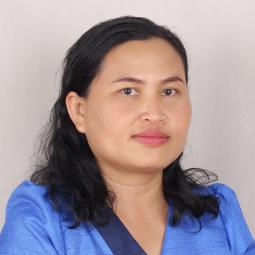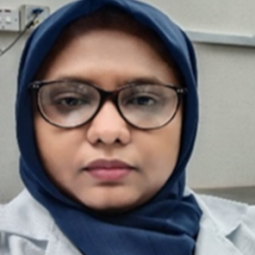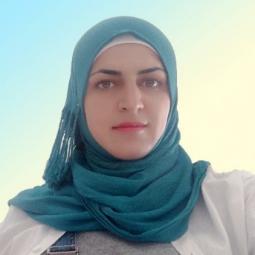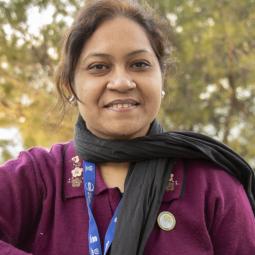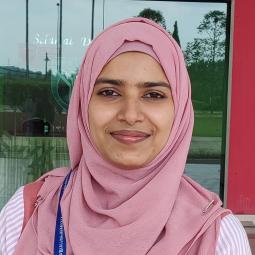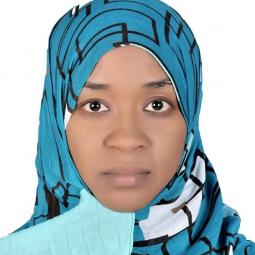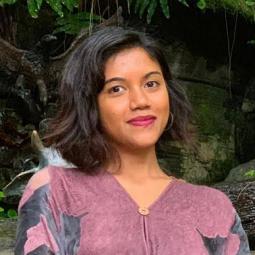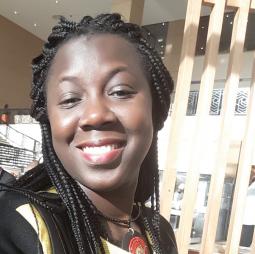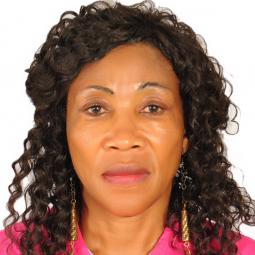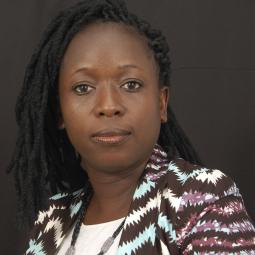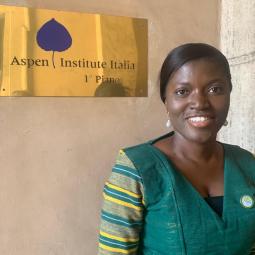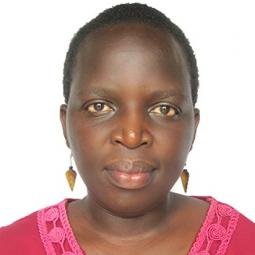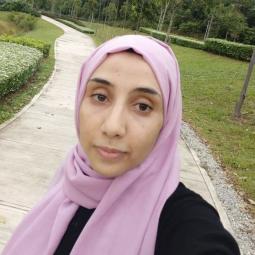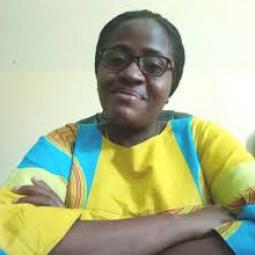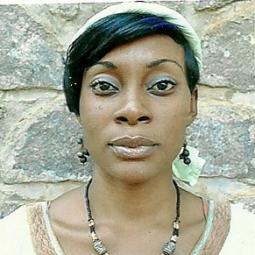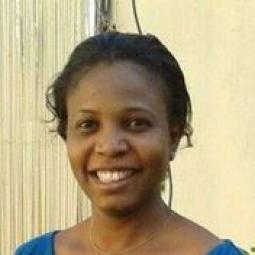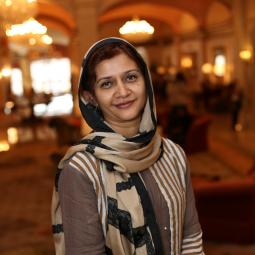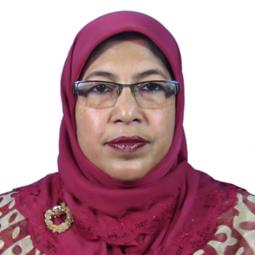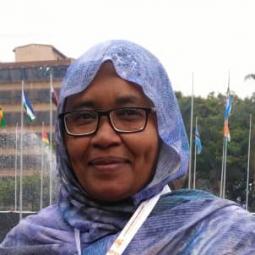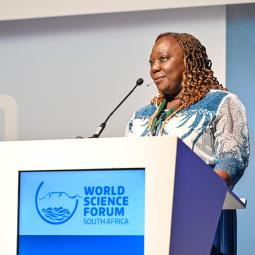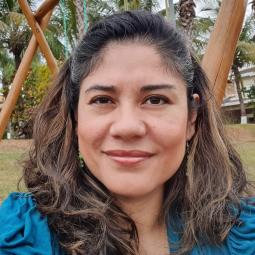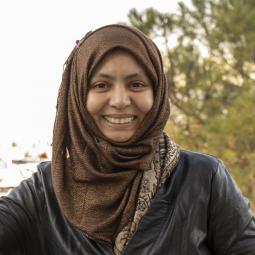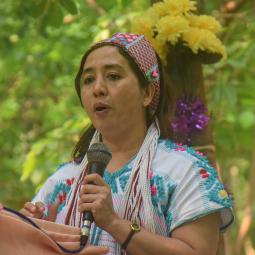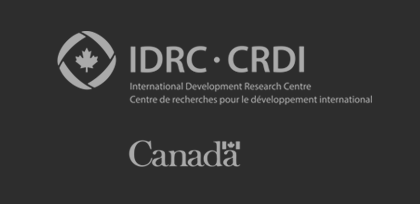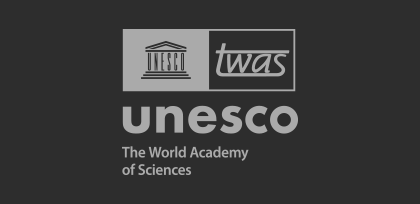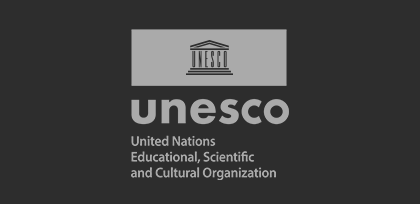Introducing the 2024 OWSD Early Career Fellows
October 16, 2024
Fifteen women from the developing world have been awarded OWSD Early Career Fellowships, supporting them to establish international-level research centers at institutions across the Global South.
OWSD is pleased to announce the 15 women who have been granted the 2024 Early Career Fellowship. These scientists will receive up to USD 50,000 to lead research projects and establish research groups at their home institutions in 13 countries in the developing world, to maintain an international standard of research and attract scholars from all over the world to collaborate. Funding for the fellowships is generously provided by Canada's International Development Research Centre (IDRC).
During the 2-year fellowship, fellows will receive specific training to build on their leadership and management skills and develop connections with a variety of public and private sector partners to potentially convert their research into marketable products or guarantee its impact on a broader scale. By improving their communication and outreach skills, fellows will also learn to effectively present their research to various audiences, thus attracting new collaborators and potential funders to ensure the sustainability of the research project.
This year's fellows are working on projects that include using AI to find vulnerabilities in health and energy infrastructures in Tanzania, to helping preserve critical oak forests in Guatemala's mountain ranges, to developing antivenom to combat different kinds of snakebite in Nepal.
Meet all the 2024 Early Career fellows below.
Early Career Fellows

Massogblé Marc Lucrèce Atindehou
Her research project will exploring the interplay between climate and growth in Benin's ancient indigenous tree species, and characterize their ecological potential for sustainable management of the urban cultural and agricultural landscape. Large old trees (LOTs) are important ecological structures for maintaining ecosystems and landscapes, both urban and rural, and play a particularly important role in soil fertilization and yield of agricultural products. They are also an important source of data on long-term climatic variability, through dendrochronological (tree-ring) analysis. In Africa, they are increasingly considered as emblems and cultural heritage. This project will compute correlations between the ring-width index and regional climate variables for LOTs in Benin, which will inform conservation efforts and policies for adoption of indigenous species in urban reforestation, leading to more climate-resilient cities.
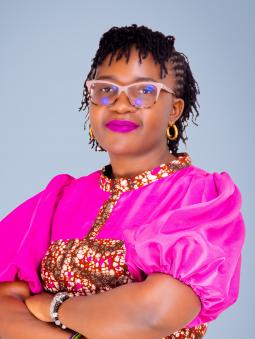
Cecilia Rolence China
Her project will develop eco-friendly tanning agents derived from agricultural waste — cashew nut shells and husks and banana stems — to replace harmful chromium-based agents in the leather industry. Traditional tanning methods are associated with significant environmental and health risks. Cashew shells and husks and banana stems, which contain natural tannins, are both abundant in Tanzania and have been investigated for their efficacy as plant-based alternatives; but most exploration of this has been done only in laboratory settings, and their application remains limited, with the majority of waste ending up in landfills. Through a multidisciplinary approach involving chemistry and industrial collaboration, this project will characterize the phytochemical composition of the waste-derived tanning agents, assess their effectiveness in laboratory and industrial settings, and evaluate their environmental impacts. By creating an eco-friendly tanning product with potential for widespread adoption in the global leather market, it aims to contribute to poverty reduction, public health improvement, and climate action, while promoting sustainable economic growth in the leather industry.
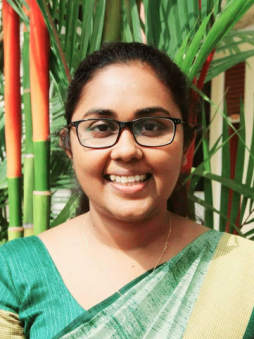
Jayangika Niroshani Dahanayake
Her research project will identify novel derivatives of curcumin as potential anti-Alzheimer agents, and develop a nanocarrier drug delivery system for the effective delivery of these derivatives. Alzheimer’s disease (AD) is the most common cause of dementia among older adults and there are only a limited number of drugs available for treatment of AD. Most of these can only treat the symptoms, and are associated with side effects. Curcumin, a natural chemical produced by plants of the Curcuma longa species and the primary bioactive compound in turmeric, has been shown to improve cognitive function in AD patients; however it it has low bioavailability and is unstable in most body fluids. The project will study newly synthesized curcumin derivatives for their neuroprotective capabilities, as well as utilize nanoparticles to develop a targeted drug delivery system that can help them overcome the blood-brain barrier.
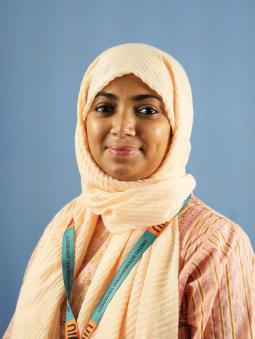
Tahmina Foyez
Her research project will develop a unique hydrogel technology for skin wound repair. Skin wound repair involves complex cellular and molecular interactions that if disrupted can lead to adverse consequences such as uncontrolled inflammation or overgrowth of cells, and therefore delayed healing. Current therapeutic approaches mainly focus on preventing infections and alleviating symptoms rather than directly targeting the micro-environments of wounds. This project will create a hydrogel technology based on bioactive materials, which play an important role in influencing wound micro-environments. A platelet-rich plasma will be incorporated into self-healing hydrogels to replicate the natural blood clotting process. During development of the product, the specific mechanisms by which bioactive materials influence wound micro-environments and anti-inflammatory responses will also be explored.

Sunita Ghimire Gautam
Her research project will develop antivenom antibodies to neutralize venom from snakes prevalent in Nepal. Snakebite has remained a neglected tropical disease in many developing countries. Snake bites mainly affect women, children and farmers with lower socio-economic status in rural Nepal. Antivenom is the most promising antidote to snake venom. As Nepal relies exclusively on imported antivenom primarily from India, the treatment is expensive and always in short supply. Variation found in the protein composition of venom depending on the habitat of snakes suggests that the Indian antivenom is probably not the optimal antidote for venoms from Nepalese snakes. Furthermore, no antivenom is available to treat pit viper envenoming in Nepal. This project will develop antivenom specific to snakes from Nepal in order to address the major issues of efficacy, cost and supply in the treatment of snakebite in Nepal. It will produce antivenom by immunizing goats with snake venoms to generate antibodies, and will partner with Nepalese company Shikhar Biotech to produce the polyclonal goat antivenom from these antibodies. It will also develop an in vitro snake venom detection kit that will assist in selection of the appropriate antivenom therapy.

Oumou Kalsom Gueye
Her research project will study the genetics and the microbiota of mosquito vectors in Senegal to develop innovative tools for malaria vector control. Malaria is a major public health problem worldwide but especially in Africa. Existing malaria control interventions, including the core vector control tools such as long-lasting insecticidal nets and indoor residual spraying, are facing serious challenges with the spread of insecticide resistance in the most common malaria vectors. This situation has led stakeholders to consider implementing innovative methods. These include genetic control, biological control, and improved chemical control. However, the application and success of these techniques require a fine understanding of the biology, ecology and genetic structuring of the vectors involved. This project will study the mosquito species Anopheles coluzzii and Anopheles gambiae, two of the main malaria vectors in sub-Saharan Africa, to determine the genes involved in insecticide resistance as well as to understand gene flow between these two species as well as with Wolbachia - a bacterial symbiont that may block transmission in insect vectors - in order to develop biological control mechanisms.
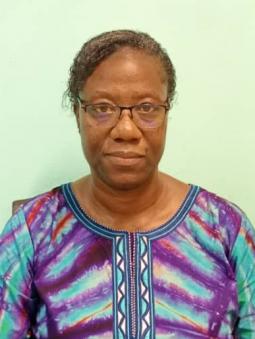
Winkom Noellie Kpoda
Her research project will develop a community-based integrated vector control method against malaria and schistosomiasis in a climate-vulnerable agricultural system in Burkina Faso. Population growth and climatic change in Africa have required changes in the food production system, including irrigation schemes, which in turn has generated more incidence of diseases such as malaria and schistosomiasis associated to these production systems. While the impact of irrigation on vector-borne diseases is documented, the specific levels and intensity of two specific such diseases, malaria and schistosomiasis, in irrigated systems of Burkina Faso have not been investigated in all regions. This project will investigate the disease impact of malaria and schistosomiasis in the Volta valleys of southwest Burkina Faso. In this region, large-scale irrigation has transformed over 6,000 hectares into resilient farmland, but the valley is endemic for malaria and schistosomiasis and suffers frequent flooding that exacerbates vector-borne disease risk. The research team will work with communities to develop strategies for mitigating disease risk while maintaining agricultural output.
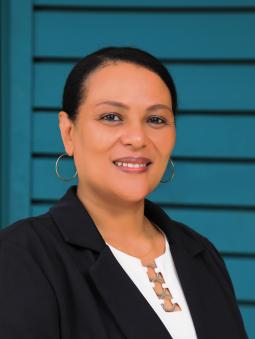
Tsige Ketema Mamo
Her research project will provide an early warning system for a malaria resurgence linked to Anopheles stephensi mosquitoes in drought-prone areas of Ethiopia. Currently, the re-emergence of malaria has become a top public health concern of the country mainly because of the newly emerged and widely spread An. stephensi, a malaria vector in areas of the country with high malaria transmission. Health authorities in the nation face difficulties in designing proactive preventive strategies against this vector due to the lack of information regarding the mosquitoes’ biology, their response to climate variability, and the effectiveness of currently used intervention activities. Thus, this project aims to develop an early warning system for malaria outbreaks through a relevant fractional derivative order mathematical model. The mathematical model will be designed based on data gathered from the An. stephensi aquatic life stages (larvae and pupae), the effect of the climatic variables on the life table, and the vector’s response to the currently available insecticides under a laboratory setting. The prediction analysis of the model will be undertaken using computing software programs. The model will assist in developing efficient intervention measures against An. stephensi besides forecasting the malaria resurgence.
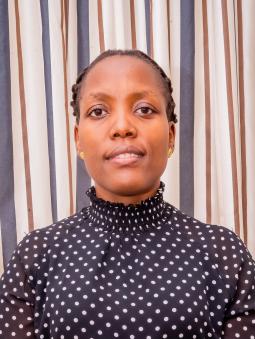
Helena Henry Maziku
Her research project will carry out an AI-enabled cybersecurity assessment for critical infrastructures in Tanzania. Critical infrastructures such as health systems, energy systems, and data centers are vital for the functioning of society, making their safety a priority for all countries. Developing countries face pressing challenges such as hunger and limited access to education that leads to cybersecurity often being overlooked, leaving organizations and individuals vulnerable to cyberattacks. critical infrastructure. This project will collect and process datasets on cybersecurity incidents from the energy and health sectors, including user behavior, network traffic, system logs, and attack alerts. After understanding the activities and requirements of each sector, machine learning will be used to develop threat models that can assess risks based on the nature of the critical infrastructure. The researchers will engage stakeholders through interviews and surveys to identify and rank vulnerabilities in order of most critical. They will apply AI to predict potential cyber threats, evaluate the performance of the models and recommend mitigation strategies. A user-friendly AI-powered cybersecurity assessment web-based tool will also be developed for evaluation purposes. The AI-powered cybersecurity assessment models will democratize access to advanced cybersecurity capabilities for agencies and research institutions in developing countries.
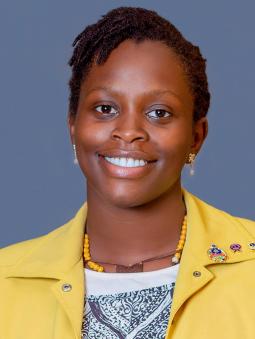
Priscilla Muheki
Her research project will use high-signal-to noise spectra of young active stars, some of which host exoplanets, obtained from the European Southern Observatory archive to study the XUV-emitting region. Stellar XUV-emission and other magnetic phenomena such as coronal mass ejections (CMEs) are critical drivers of planet atmospheric erosion. This is a pertinent issue in the era of the search for habitable exoplanets. M-F type main-sequence stars tend to have high magnetic activity that leads to heating of their chromospheres and coronae. The hot plasma is the source of the stellar X-ray and extreme UV (XUV) emission. It is vital to study the effects of these phenomena on evolution of planets and life; however, even with satellites, it is challenging to study relevant parts of this radiation. This study will model the fluxes of the coronal lines in XUV and stars showing coronal lines will be used to search for CMEs. The detection will launch the study of emission from the corona of the stars.
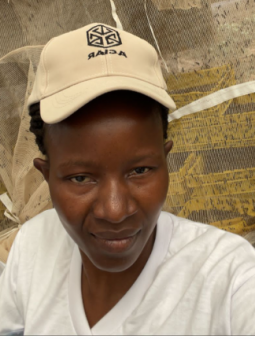
Wilckyster Nyateko Nyarindo
Her research project will strengthen the participation of women, youth and marginalized groups in the chicken value chain in lower eastern Kenya, promoting them beyond smallholder backyard farming with eco-friendly practices. More than 70% of Kenyans living in rural areas are supported by agriculture, and smallholder poultry farming is abundant, with most households keeping chickens for domestic consumption. Despite its importance, chicken farmers - who are largely women - face challenges such as high cost of inputs, limited access to high-value markets, climate variations, and lack of bargaining power. This project aims to help farmers address these challenges through novel initiatives like establishing eco-friendly black soldier fly (BSF) production units, developing homebased chicken feed formulations, implementing dam liner multi-story gardens, and introducing technologies to extend the shelf lives of larvae, eggs, chicken meat, fertilizer and vegetables. This will increase productivity and enhance the livelihoods of the smallholder female, youth and vulnerable chicken farmers.
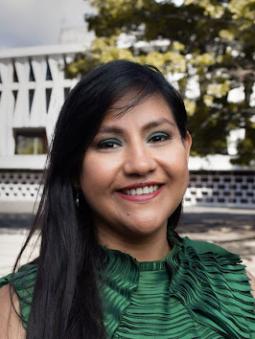
Maura Liseth Quezada Aguilar
Her research project will identify at-risk species of oak trees within the forests of Guatemala's volcanic mountains, and establish community nurseries for their conservation. Oaks are of tremendous ecological as well as economic importance in Guatemala. The oak and pine-oak forests in the mountainous regions of Central America are often called the "forest bridge of the Americas". More than 70% of Guatemala's rural population also depends on oak trees as their main energy source. While the different species of oaks have been mapped in 15 of Guatemala's 22 administrative departments, information is missing for the regions that make up its volcanic mountain chain. This project will gather data on the distribution and vulnerability of oak species within these departments, informing strategies for conservation, management and restoration of the forest landscape considering the ecological and socioeconomic importance of these species. It will also promote participatory processes through the involvement of civil actors, students and university professors, and strengthen community and municipal nurseries, prioritizing threatened oak species so that they are available to be used in forest restoration.
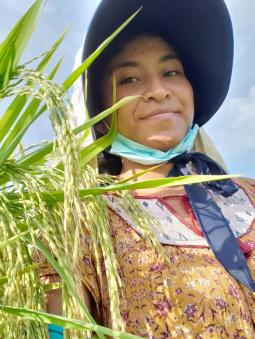
Mbolatantely Fahazavana Rakotondramanana
Her research project will develop a new biofortified lowland rice variety for Madagascar. Rice is the staple food of Madagascar's Malagasy populations. Rice is a poor source of zinc, however, and in Madagascar where people often consume rice three times a day without sufficient dietary diversification, zinc biofortification is a research priority. Zinc deficiency affects 80% of Madagascar's population, especially in rural areas. This study will select varieties of rice that are high in zinc to alleviate malnutrition in the Malagasy diet. It will establish the baseline zinc content of local varieties grown by three of Madagascar's primary rice producers, identify high-zinc crop lines from crosses with one high-zinc parent crop, as well assess the outcome of crossing two high-zinc parent crops, taking into consideration that it should also meet farmers' demands for high grain yield and grain quality. This will hopefully lead to the release of a new lowland rice variety with high enough zinc content to counteract malnutrition in Madagascar.

Abibatou Sall
She will conduct a study of genetic alterations in childhood cancers in sub-Saharan Africa, detected by next generation sequencing. The number of cancer cases increases significantly every year in Africa, though overall case numbers still remain underestimated. The past 30 years have seen the incidence of cancer double, which includes children. The incidence of childhood cancer is said to be the same in developed and developing countries; but the number of recoveries in developed countries is around 80%, while in Africa, the number of deaths is estimated at almost 80%. Genetic predisposition is a major factor in childhood cancers. Understanding the genomic landscape of childhood cancers in developed countries has enabled significant advances in diagnosis, characterization, and treatment of different types of cancer, but no such study has been performed in sub-Saharan Africa. This study will use next generation sequencing to look for genetic abnormalities in children with cancer at several locations across Senegal, to better understand the genetics of cancer tumors as well as genetic alterations most frequently found in patients with each type of cancer, and to determine genetic factors that affect prognosis of the disease, as well as factors of resistance to treatment. This understanding would be a significant contribution to the health and wellbeing of young cancer patients, leading to a better quality of life, a reduction in mortality, and evidence that can prompt health authorities to devote greater attention to cancer.
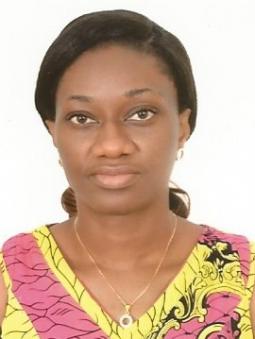
Akissi Marie-Florence Yebouet
Her research project will build a multispectral drone that will enable early detection of infection in cassava plants in Côte d'Ivoire. Cassava is the second most important food crop in Côte d'Ivoire, but cassava production is limited by many bacterial diseases which are estimated to reduce production by as much as 80%. Early diagnosis of infection is necessary to prevent production loss. Existing techniques use a smartphone app requiring an image of a leaf from each plant in a given field; for a large area, this work is tedious, and usually left to women, who are in the majority in all links of the cassava value chain. This project will construct a drone that can map fields, capture multispectral images, and collect leaf diffuse reflectance spectra. Neural network-based analysis will predict infection only 24 hours after plant infection, leading to earlier diagnosis of cassava diseases and a lightened burden on farmers.

